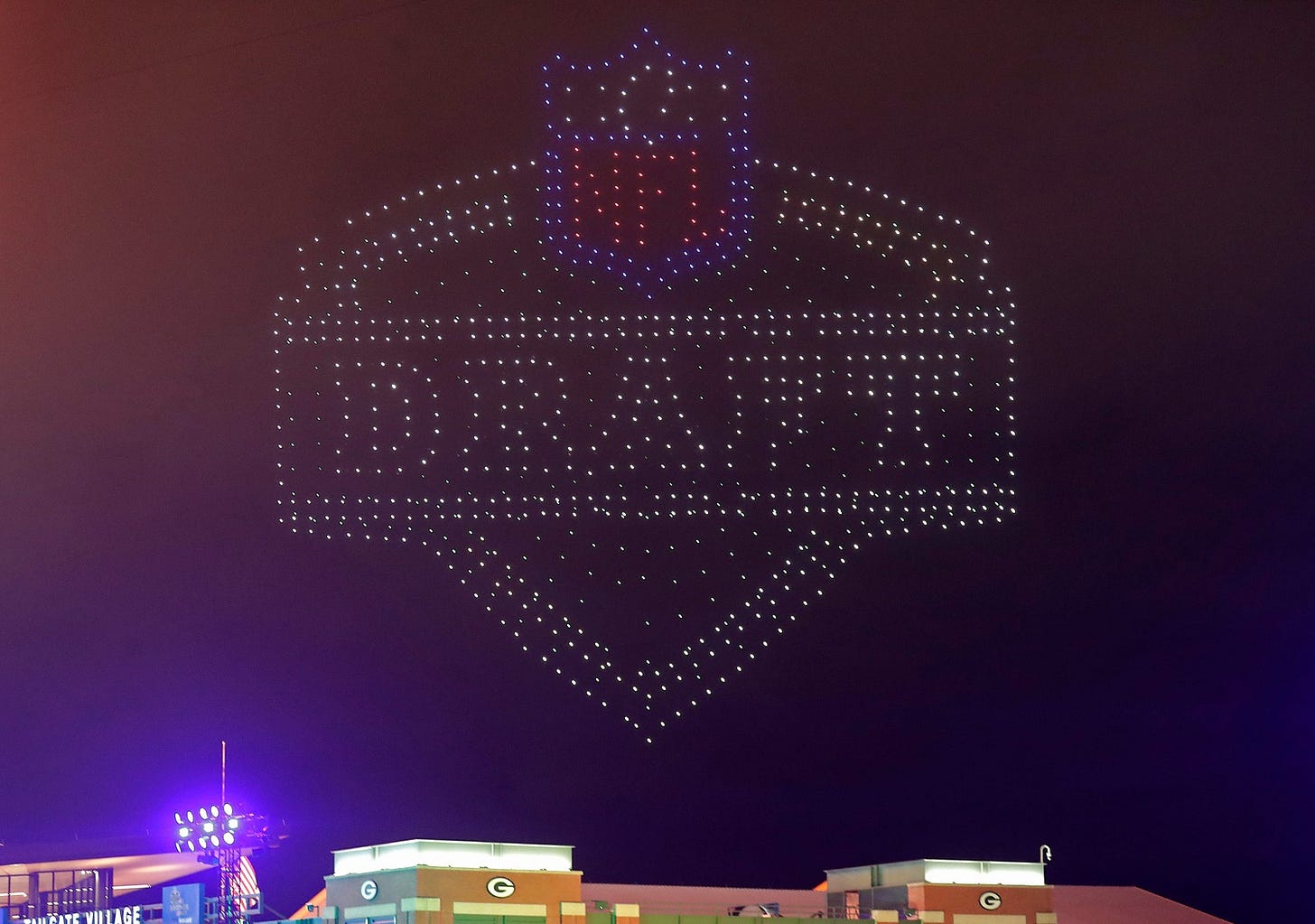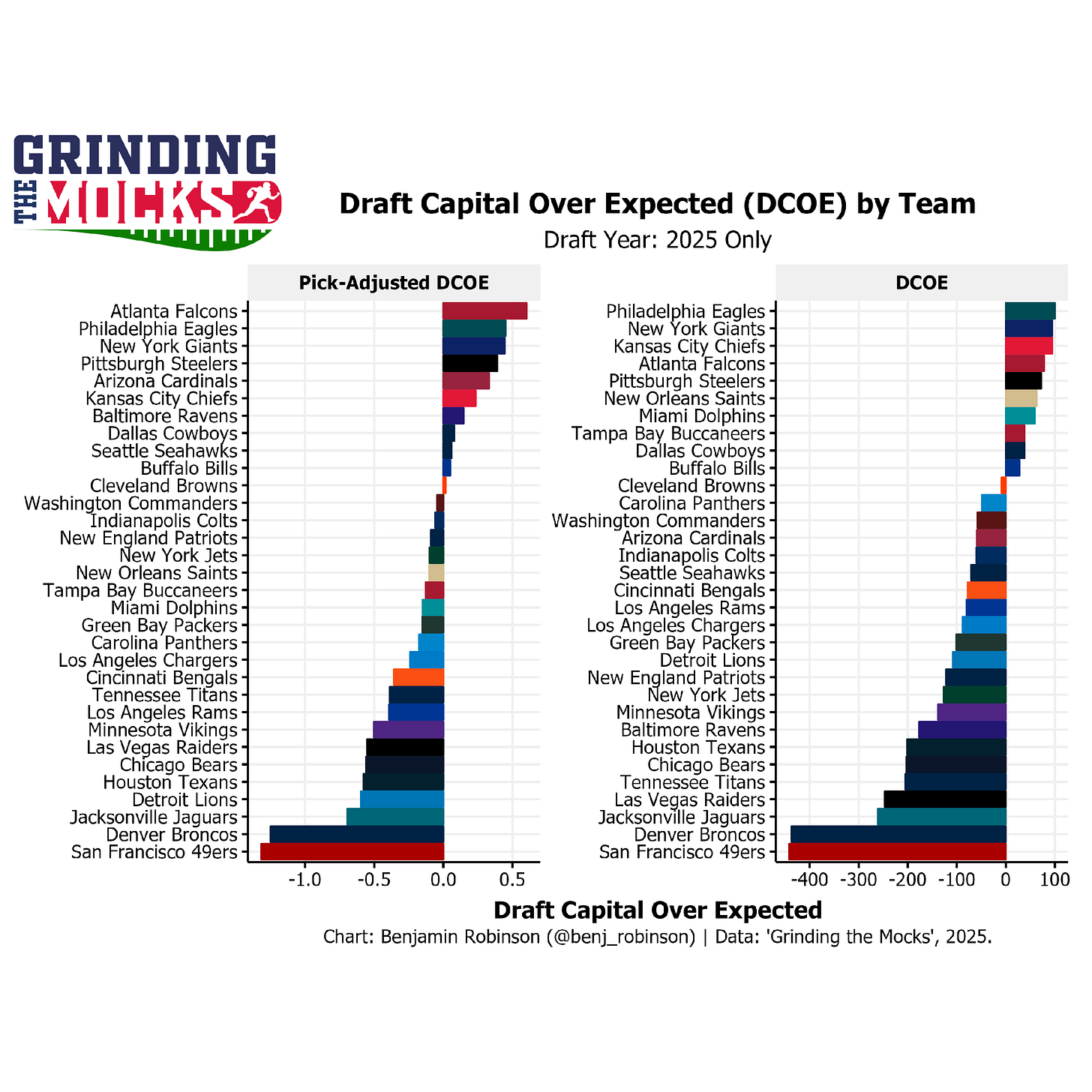Vikings draft winners
Who benefits most from the Vikings' decisions in the draft?
By Matthew Coller
Yesterday I wrote about Isaiah Rodgers and Theo Jackson being the happiest guys in the building coming out of the draft. Here’s a few other Vikings that could be considered the winners and losers of the draft in Minnesota:
— JJ McCarthy is the most obvious winner. The Vikings’ first two draft picks were aimed directly at giving him a better chance to succeed. If Donovan Jackson solidifies the offensive line, they could have one of the elite units in the NFL in terms of pass blocking. Just for context to show how much that matters: Baker Mayfield was the least pressured starting QB in the NFL last year and had the No. 2 rated pass blocking O-line and he finished with a 106.8 overall quarterback rating despite only having an 84.9 rating when pressured. Jackson could also immediately add juice to the run game, which has been in desperate need of improvement for three years.
It’s hard to say how much Tai Felton will change McCarthy’s receiving unit but one area that stands out would be with screens. Justin Jefferson, Jordan Addison and Jalen Nailor only combined for 23 WR screens in 2024. There were four receivers in the NFL who had more by themselves. Even if Felton makes a handful of YAC plays for McCarthy it would add something they didn’t have before. (Rondale Moore could also be this guy too).
— Special teams coach Matt Daniels may have landed a lot to work with in just a couple picks. Felton did not do a ton of returning in college but his sub-4.3 speed and tackle breaking capabilities will at least put him in the competition with a number of other players for punt and kick returning. The Vikings struggled in both areas in 2025 and the NFL is increasing the emphasis on the kick return this year. The player with the most upside as a special teamer might be linebacker Kobe King, who was an elite run stopper in college and plays with some violence to his game.
— At least for now, Ty Chandler is a winner because the Vikings did not spend a draft pick on another running back. It’s always possible that they could look into other options behind Aaron Jones and Jordan Mason like free agents JK Dobbins, Gus Edwards, or D’Ernest Johnson but otherwise the fourth-year RB/KR is in line to play a depth role.
It’s been an odd journey for Chandler. In 2023, he seemed to emerge as a serious weapon, carrying the ball 102 times at 4.5 yards per carry and adding 21 receptions for 159 yards. Coming off that performance, it was expected that he would be part of a duo with Aaron Jones but instead he seemed to lose the trust of the coaching staff and the Vikings traded for veteran Cam Akers. In 2024, Chandler ran just 56 times and caught six passes. Will he now have a chance at playing a role off the bench or will they have more competition for him at RB3 soon? Will UDFA Tre Stewart be that guy?
— I considered including Jalen Nailor as one of the players who was not a winner of this draft because the Vikings invested in Tai Felton but I don’t think that’s going to be the case in 2025. The coaching staff has always been high on Nailor and he delivered last year when Jordan Addison was out and late in the year under the bright lights vs. Green Bay. It would be a huge surprise if Felton was ready to take away snaps from Nailor, who needed several seasons to develop. Felton gives the offense a little more flexibility in the best-case scenario. Playmaking, quick game etc. — stuff that Nailor isn’t known for. Also Nailor is a free agent after 2025 and if he has a solid year, he will be tough to keep.
— Another player who had a rough draft day is Blake Brandel because the Vikings clearly drafted Jackson to replace him. However, Brandel will still be competing with Jackson in training camp and he offers a decently high bar to reach as someone who has started a full season before and played fairly well alongside Christian Darrisaw. If Jackson isn’t ready to start Day 1, as many O-linemen are not, they can still feel comfortable with Brandel.
The other thing is: The Vikings have some of the best depth in the league at O-line and teams rarely see their entire starting lineup play 17 games. If Brandel has to come off the bench, the offense shouldn’t have to change.
— The Vikings weren’t likely to draft anyone that would threaten OLB Dallas Turner’s expected role on the 2025 defense but nonetheless they could have taken a number of quality prospects on the board if they wanted to give him some competition including Tennessee’s James Pearce, who the Falcons traded a future first for. In the third round they traded down past edge rushers Sai’vion Jones from LSU, Jack Sawyer of Ohio State and Kyle Kennard from South Carolina.
In free agency, the front office also did not bring in any competition for Turner despite losing Patrick Jones. They will have players like Bo Richter and Gabe Murphy battling for position too.
— Analytics were a loser of this draft for the Vikings. We can’t say for sure whether they actually got the same offer from the Falcons to move up and take James Pearce but Los Angeles sent the No. 26 pick and the No. 101 pick to the Falcons in exchange for the No. 46 pick, the No. 242 pick and a 2026 first-rounder. The difference between 26 and 46 on the OverTheCap draft value chart is the equal of a sixth-rounder, yet the Rams ended up picking up another first, which could turn out to be a high draft pick if the Falcons aren’t a legitimate contender. By any analytic model, the Rams demolished the Falcons in the trade and, despite the Vikings’ need for a guard, it’s very hard to justify not taking it if that offer was on the table.
The move the Giants made up to take Jaxon Dart was also pretty darn good for the team that moved down. Houston ended up getting No. 99 and a 2026 third-rounder to slide down nine slots. By the chart, the gap between 25 and 36 is basically a seventh-round pick and the Texans landed the same value as a second-round pick by the OTC chart.
The other thing about the Jackson pick was that it was a “reach” versus the Arif Hasan Consensus Board where he was 36th. Overall, by Benjamin Robinson’s “Grinding the Mocks,” the Vikings were among the lowest teams in terms of value over expected based on consensus.
Does that mean the Vikings blew the draft? Of course not. Picking slightly over consensus is far from predictive and Donovan Jackson wouldn’t have been there if they had moved down. GM Kwesi Adofo-Mensah used a golf analogy to describe choosing to pick Jackson rather than moving down — the crux of it being that he would rather play for the guy they wanted who fits the culture and immediately improves the O-line instead of trying to swing for the fences.
Every draft has its own context. The Vikings aren’t in a position where they are trying to throw a bunch of picks at the wall and hope something sticks. They are a team that’s ready to win and picked a position that could have a multiplier effect because it potentially helps JJ McCarthy be a better version of himself and the running game be the best it has been in a long time. These things aren’t done in a vacuum. So we don’t have to be down on the Vikings draft just because it didn’t match up with the widely-accepted analytical way of doing things. We also can’t ignore the fact that they did draft for immediate need rather than total value and that’s often more risky.
Keep reading with a 7-day free trial
Subscribe to Purple Insider to keep reading this post and get 7 days of free access to the full post archives.


